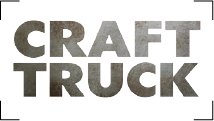Hello folks,
While we were shooting our bits for Tech Bites, Ted from RED came in and gave us a whopping dog n’ pony show.
First up, we have Dragon. Now when we shot this, they were still keeping all the specifics about Dragon hush-hush. It’s been released now and pretty much what we talked about here with a few tweaks.
What is so awesome about the RED Dragon sensor? Well first off I can’t tell you cause I haven’t really seen it. But if you’re familiar with RED products, and you know how they usually work and what to expect (we call this “corporate culture”, honeys) then you’ll know that there’s a pattern to the development and improvements on their equipment and technology. So here is what we are expecting from the sensor and what our predictions are….
First off the whole 6k thing means that you do have a whopping number of pixels. If you want to really understand the difference between 6k and 5k it’s easy, just square both of them. The ratio of 36:25 is actually what you’re dealing with give or take a few….more than 40% growth in the number of pixels. At craft truck this isn’t really the biggest thing to write home about. While more pixles is a great thing, what’s more important is control, compression, dynamic range, rolling shudder, artifacting, and the other things you “see” and actually impact the image. So for what it’s worth, yes you’re getting more pixels and we should also note you’re getting smaller or tighter ones, thus making the resolving power of the sensor and the camera even better.
What else is different? Listen this spec’d out 16.5+ stops of latitude is crazy. My guess is that it actually IS greater than 16 stops in true performance. The Mysterium-X had a really usable 11.7-12 stops. This adds probably two stops to either end. Even if it’s only 15 stops you’re going to have information all the way up and down the spectrum. This is insanely powerful.
STOCK UP ON YOUR ND FILTERS NOW, KIDS. As you know the Dragon only ever records at one true ISO for Raw. The rest is just skins or looks placed on top of the RAW when you shoot it. With MX, RED said the ISO was 800. It wasn’t, it was closer to 320, but they gave a 1.5 stops suggested rating to protect your highlights.
(Note: if you want to know how to figure this out, just look through your eyepiece or monitor and flip between a selected ISO and RAW view. Whichever ISO gives you the closest similarity of image, guess what…that’s your actual Native ISO. It ain’t rocket science.)
With Dragon RED is claiming ISO native 2000 or thereabouts. If history stays the same the native will be 800 without protecting highlights, but for all we know it might be 1000, 1250, 1600?? Even if it’s 800….that’s really, really sensitive and with 8 stops up or down from there you’re pretty much able to catch everything. USE THAT LATITUDE KIDS. EXPERIMENT.
They’ve come out now and said that the price is essentially $9,500…..well there’s a long menu I won’t write out but let’s just say you can check it here. Point is this, I think it’s a worthwhile investment and probably good for both Scarlet and Epic. For Scarlet owners I recommend making your Scarlet Drago-fied instead of going all the way to Epic if you want to save money. Yes, you’ll only be able to shoot in 5k but guess what….who care? That’s still way more resolution than you used to have (25:16 ratio, or 52% more) and you get the full latitude of the sensor, AND you don’t have to worry about lenses which you WILL have to with 6k (more on this below).
RED hasn’t made any mention yet of Global Shudder issues or changes but I believe they will be adding processing power to either help in this regard or change it from what it was. Who knows? But it is an issue that could use addressing. It’s one of those things that does quite realistically effect the image that you’re making and how it looks on the screen, particularly with motion.
On the subject of lenses, the sensor is now pushing 30mm wide for the full 6k resolution. If you do the math, the sensor is going to have a diagonal of approximately 33.54mm. This means if you want the full res you need a lens that has a coverage diagonal of 33.54mm. Dude? That’s really not every lens. Super 35mm format was 25mm wide. So most lenses made by Zeiss, Cooke, etc. were prepared to cover approx. 31mm shooting full camera negative on 4-perf. While your STILL or DSLR lenses can easily still cover that area, a lot of the best motion picture lenses might not. For example the excellent Schneider lenses only cover 31.5mm. So beware thinking that you’re going to go and shoot 6k with a pro lens cause it might not work. Not only that but beef up your processors, RAM, etc to playback this stuff and resolve it on the back-end. Good luck with that.
It’s fantastic that 6k is available and for those who can put the extra engineering into processing and shooting and refining that image, fantastic. But if you’re an indie filmmaker? Cough up the bucks for the sensor and LOVE the fact that it’s quite simply WAY BETTER, even at 5k Res. Which it should be.
Other posts you may like:
RED Introduction
REDRAY
How Steven Soderbergh packs his RED
Get Exclusive Content
Subscribe to Craft Truck and get instant access to these three exclusive clips:
- Advice to young filmmakers by Dean Cundey
- Choosing your tools by Gordon Willis
- How to figure it out by Reed Morano
